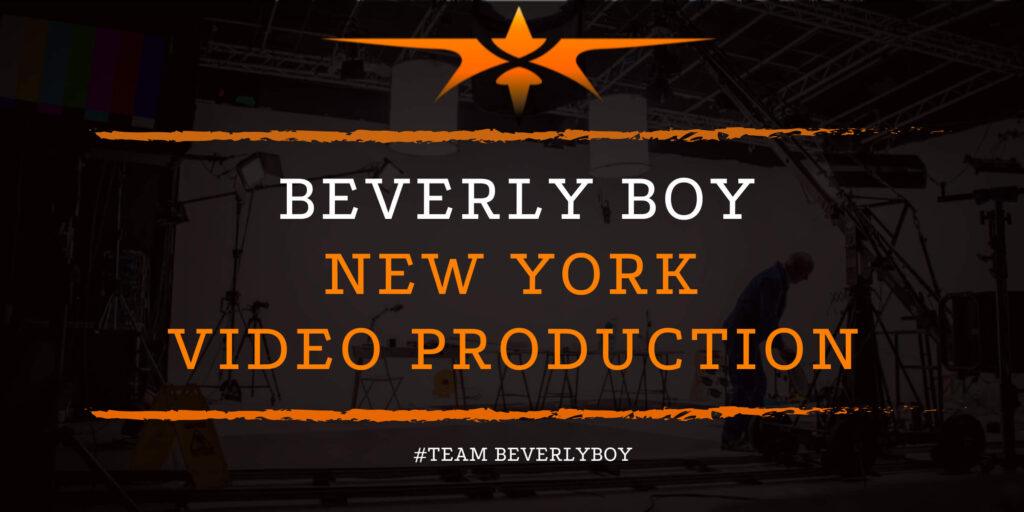Beverly Boy New York Video Production
Trying to find video services in New York? You’ve come to the right place at Beverly Boy New York video production. We’ve been producing videos in NYC for nearly two decades. Using only the top video technology and the latest industry trends, we deliver unique video content for our clients that is equal parts creative, stunning and effective. We specialize in commercial, television, film and corporate video production services in New York. Just take a look at some of the recent work that we’ve filmed in NYC below:
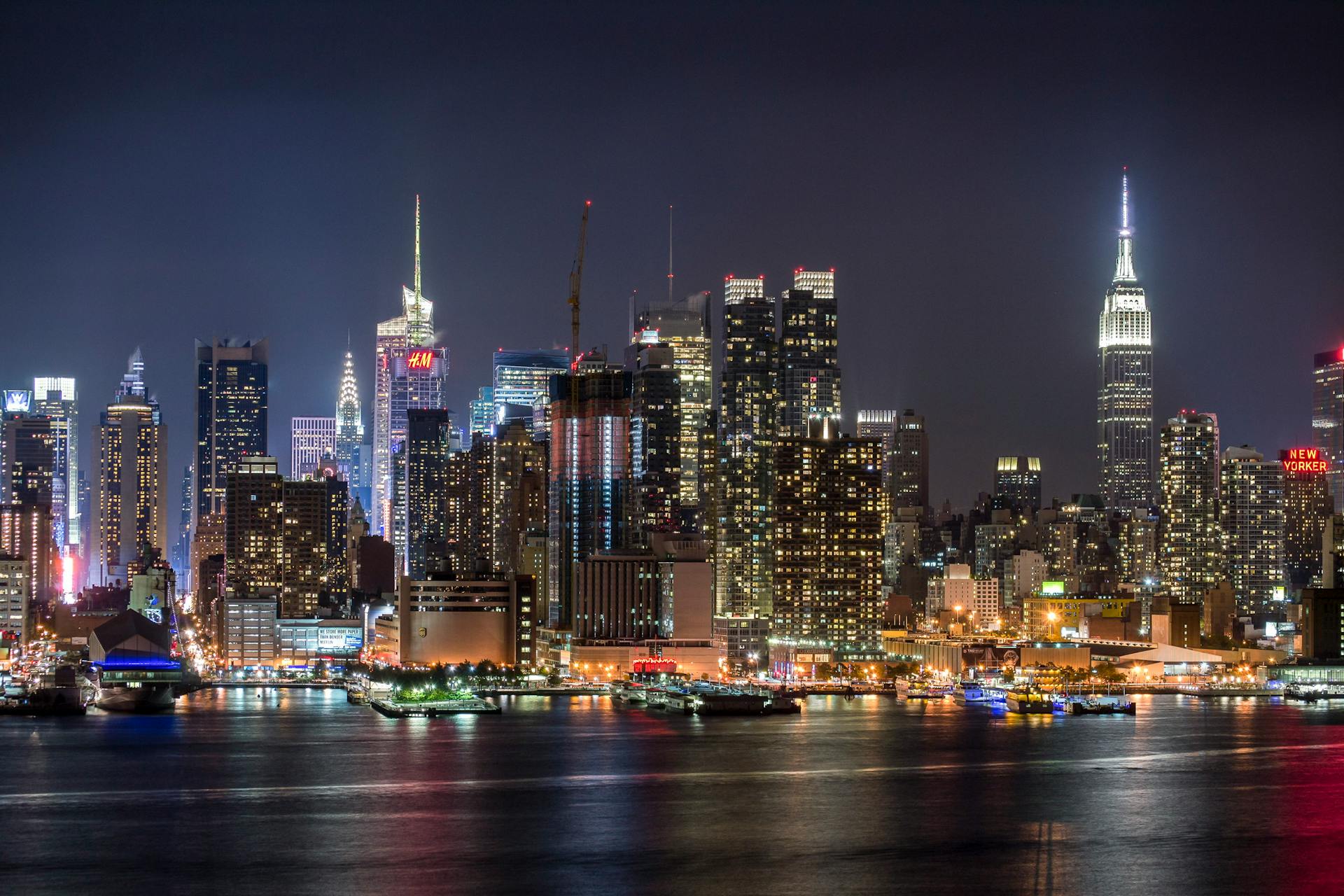
Get a New York video production quote here!
History of New York & New York Nicknames
Early Lenape, a group of Algonquin people that were hunters and gatherers, would begin farming in the area between the Delaware and Hudson rivers as early as the late 15th century These are the true “natives” of New York City.
Into the 16th century, Europeans such as Giovanni de Verrazzano, an Italian that sailed the Atlantic coastline seeking an acceptable route to Asia, would begin the exploration of the New York City area in the early 1600s but none would settle the area until at least 1624 when the Dutch West India Company began settlement there.
Nutten Island
Calling it “Nutten Island,” what is now Governors Island was the initial settlement location for 30 families that entered the area via the Dutch West India Company. Later, in 1626, Peter Minuit, the settlement’s governor, would purchase a mass of land from natives for 60 guilders in trade goods.
The purchase of Manhattan Island involved the trade of tools, coth, various equipment for farming and wampum or shell beads which were considered valuable at the time.
Although less than 300 people lived in the Nutten Island area at the time, moving the entire settlement to the new, Manhattan location would prove to be a strategic move.
Nutten Island grew quickly into the 1700s and in the year 1760, the then New Amsterdam or “Nutten Island” would be called New York City. An official population at the time was recorded at 18K for New York City.
A Rising Population
NYC would quickly surpass Boston and other major cities in the American colonies and, within fifty years it would be considered the largest city in the Western Hemisphere with a population of 202,589. Of course this is a minute fraction of the total population of the city today which is more than 8 million people strong!
Into the 18th century, New York City would continue to grow in population size and diversity. Immigrants from the Netherlands, England, Germany and France as well as slaves would continue to flood into the area, which served as the capital of the United States from 1785 until 1790.
The Revolutionary War
Throughout the mid- to late-1700s NYC would face resistance as the British attempted to remain in control of the area. Businesses in the city closed shop and sought to pull out in retaliation to the Stamp Act passed by British Parliament in 1765.
However, despite efforts of George Washington’s Continental Army to take back NYC collectively during the Revolutionary War, New York City would fall once again to the British where it would become a military base until 1783.
Following the war, the city would recover rapidly to become one of the most important ports in the nation. Southern planters would flock to the city to ship their crop to the mills in Manchester and various English industrial towns via the East River docks.
Transporting Goods
Finished products would be shipped by textile manufacturers back to New York in a similar manner.
Unfortunately, the transport of goods to the north and west would prove challenging until 1817 when construction of the 363-mile Erie Canal running from the Hudson River to Lake Erie would begin.
The Erie Canal completion in 1825 would make NYC the trading capital of the nation complete with ease of access from any direction into, or out of the city.
Changes to Infrastructure
Growth within the city would lead to several improvements with the city’s infrastructure. Undeveloped areas of Manhattan would become the prime subject of the “Commissioners Plan” which outlined a structured grid of streets and avenues for the area just north of Hudson Street.
Construction of an Aqueduct that could provide clean water to the growing city and the establishment of the NYC Police Department would all take place in the 1830s, a busy time for a growing New York City.
Immigrants would continue to flood the area from Germany and Ireland throughout the 1840s and 50s. As time passed, immigrants would also flood into the city from Southern and Eastern Europe.
The immigration overload would also lead to a changing landscape within the city as distinct neighborhoods would form, trade unions developed, and churches, social clubs and political organizations would take address around town.
The Five Boroughs
New York City became the well-known city that we are familiar with today at the turn of the 20th century. In 1895 areas that were at the time individually operated voted to consolidate.
Thus the Bronx, Staten Island, Queens, Brooklyn, and Manhattan would become the five-borough city that is now known as Greater New York making up an area of 60 square miles and, at the time, a population of more than 2 million people.
Many American cities struggled throughout the 20th century, New York City included. Continued construction on infrastructure both within the city and in other areas of the nation would prepare the area for later growth.
But encouragement from leaders following World War II that sought to have the most affluent people of the city move out would create a climate of economic change throughout the city. This would remain the pattern for several years.
Immigration
Deindustrialization and various economic changes that led to a lower tax base and fewer public services for residents would further push out any affluence from the city as immigrants would continue to pour in.
The Hart-Cellar Immigration and Nationality Act of 1965 would make immigration from Africa, the Caribbean, Latin America and Asia possible. Many of those who immigrated at this time would make NYC their home. Thus, neighborhoods throughout the city began to, once again, come alive.
Tragedy Stricken
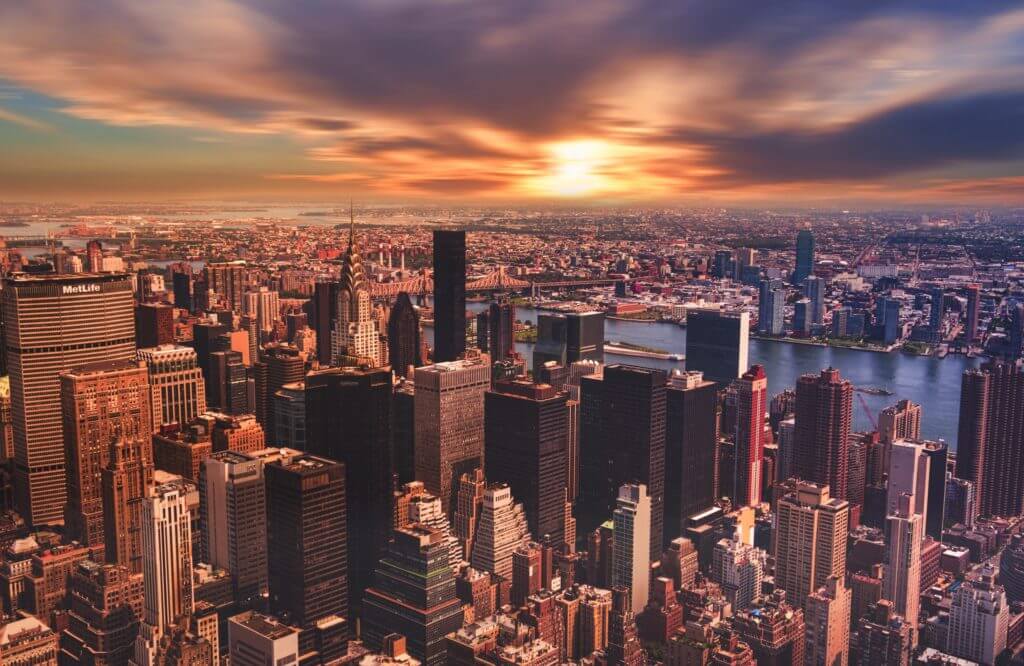
New York City has since been a booming locale with many major businesses calling the city home. Sadly, September 11, 2001 would change the way we all know New York City to be when a deadly terrorist attack resulted in two hijacked planes crashing into the city’s tallest buildings, the World Trade Center.
The attacks killed almost 3,000 people and injured many, many more. Despite the disaster, NYC remains a major financial capital for the United States and the World while attracting tourists from all around the world.
Present Day
The city’s population is more than 8 million people strong today. A third of those residing in the city were born outside the U.S. thus, NYC continues to be culturally diverse and vibrant.
Visit any one of the five boroughs that make up the Greater New York area and you’re sure to hear a different story as to how residents arrived, how long they’ve called the city home and what they think about their hometown. Even naming conventions for the city vary from borough to borough.
Nicknames for the city are as diverse as the residents and culture of the town. Many refer to New York City as The Big Apple, referencing prizes (apples) that were handed out in the 1920s to winners that completed various racing courses in and around the city.
Additional nicknames for the city include:
- The Capital of the World
- The City of Dreams
- The City so Nice, They Named it Twice
- The City that Never Sleeps
- Fun City
- Empire City
- Gotham
- The Melting Pot
Likely the most common nickname for the city though is based on the specific borough that one is speaking about. Thus, the Bronx is used throughout the Bronx and Manhattan is used when talking about the Island, etc.
Tourists tend to reference the Big Apple whereby residents reference their borough–it’s that simple.
Famous Movies Filmed in New York

A city with such a rich history and historic buildings and architecture is sure to have several movies and films made around town. Over the years, hundreds of movies and television shows have been filmed in the city.
Times Square is the host location for daily filming of television morning shows and news. Tourists actually flock to the Square for their chance at mere seconds of fame.
You may have realized you caught a glimpse of the Big Apple in any one of the following movies over the years:
- Home Alone 2: Lost in New York – featuring Macaulay Caulkin, this movie includes views of Central Park, Lower Manhattan and the inside of the Plaza Hotel.
- New York, I Love You – featuring several major stars and directed by 11 different directors, this film takes us into each of the boroughs and offers a glimpse into the true diversity and culture of the city.
- You’ve Got Mail – featuring Tom Hanks, this film takes place primarily on the Upper West Side with views of the Hudson River and several of the local landmarks that make NYC home to so many.
- Breakfast at Tiffany’s – featuring Audrey Hepburn, this movie takes us into Fifth Avenue. Need we say more?
- Manhattan – Featuring Woody Allen, this movie takes viewers into some of the city’s hottest spots from the era including the Empire Diner and the Solomon R Guggenheim Museum.
- The Avengers – Featuring Robert Downer Jr, this film takes place in the center of Midtown Manhattan and features scenes from the Chrysler Building and Grand Central Terminal.
Television shows are filmed in the city on a daily basis. In fact, many visitors come to the city strictly for their chance to get a glimpse of their favorite television host or, better yet, to get their chance on the big screen that casts from the top of Times Square.
If you’re considering a trip to New York City for a chance to be part of a live television filming, chances are you’ll have access to any of the following shows:
- The Daily Show with Trevor Noah – filmed at 733 Eleventh Avenue from 6 pm until 7:30 pm Monday through Thursday, this Comedy Central show features entertainment news and pop parodies.
- The Dr. Oz Show – filmed in front of a live audience in NYC, the Dr. Oz Show is filmed at 320 West 66th Street. Shows are generally filmed twice a day, three days per week.
- Good Morning America – ABC’s morning show is filmed live on weekdays at 7 am right at Times Square.
- Last Week Tonight with John Oliver – filmed at the CBS Broadcast Center, this show tapes on Sundays at 6:30.
- Inside the Actors Studio (Ovation) – filming at the Michael Schimmel Center for the Arts, there is no set schedule for this NYC television show so the best way for information is to check online for details.
- Full Frontal with Samantha Bee – an Emmy-winning program that features satirical news, this show is filmed at the CBS Broadcast center on Wednesdays from 5:45 pm until the wrap.
- Late Night with Seth Meyers – an NBC late-night television show filmed at Rockefeller Plaza, this show filming begins at 6:30 pm on Thursdays.
- The Late Show with Stephen Colbert – A CBS television show that is filmed at 1697 Broadway, this NYC television show features celebrities and musical acts alongside current-events news.
- Live with Kelly and Ryan – featuring Kelly Ripa and Ryan Seacrest, this show is filmed live from 9am until 10am on weekdays from Lincoln Square.
- The Rachel Ray Show – filming Tuesday through Thursday at various times, this syndicated television show is filmed at the Chelsea Television Studios.
- Saturday Night Live – filmed at Rockefeller Plaza on Saturdays at 11:30, viewers interesters in attending can attend the dress rehearsal or live show.
- Today – AN NBC favorite, the Today Show is filmed at Rockefeller Plaza Monday through Friday as well as Saturday from 7 am until 9 on Saturday or 11 am the rest of the week.
- The Tonight Show Starring Jimmy Fallon – Filming in Studio 6B at Rockefeller Plaza, this show tapes Monday through Friday at 5 pm.
- The View – featured on ABC and filming from 57 W. 66th St. daily at 9:30 am, The View highlights current events and interviews celebrity guests daily.
- The Wendy Williams Show – the syndicated cable television show featured on BET is filmed Monday through Thursday at various times from Chelsea Television Studios.
Daily film times and the addition of new television shows to be filmed in NYC change regularly. The best way to find out what’s filming in the area ahead of your trip is to visit the Official New York City Media and Entertainment website.
New York Film Office, Film Organizations & Local Film Groups
The Mayor’s Office of Media and Entertainment features four divisions that support the film industry in New York City. The Office of Film Theater and Broadcasting works to coordinate film and television production throughout the city.
The NYC Media works to ensure television and radio broadcasting reaches the 18 million viewers within the city’s 50-mile radius while also ensuring educational initiatives and the workforce in the film industry is protected for the 305K jobs in media within the city.
Anyone with questions or comments regarding the film industry in New York City should direct their attention to the NYC Media & Entertainment office.
Creative Support
Film organizations working within NYC to support creative members of the film industry are as diverse and widespread as the residents who call the city home. Several NYC film organizations and associations bring the production community in New York City together through networking and training events, collaborative efforts and professional development.
Producers, directors, film crew and aspiring film workers are sure to find an organization or association that can help with a wide range of needs in NYC.
The following film organizations and groups are found within the city:
- Independent Filmmaker Project (IFP) – representing 10K filmmakers in NYC and providing educational workshops, conferences and seminars to support filmmakers.
- International Documentary Association (IDA) – supporting documentary filmmaking through various activities that improve nonfiction filmmaking production.
- New York Foundation for the Arts – providing independent artists support to empower a wide range of creative standards for all ages.
- New York Production Alliance – representing the film, television and commercial production industry, more than 75K members come together for support from this organization.
- New York Women in Film & Television (NYWIFT) – representing women and men of NYC working in the film and television industry, WIFT seeks to support the industry.
- Post NY Alliance – Providing post-production support to those in film, television and interactive media throughout NYC.
- Shooting People – an independent film alliance that features 38K members in NYC and surrounding areas that meets regularly.
- Society of Motion Picture & Television Engineers – a group dedicated to supporting engineers, technical directors, editors, technicians, designers, educators and others in the industry through networking, collaboration and more.
- Upstate Independents – providing non-profit support for filmmakers, screenwriters, actors and those in the film industry within the Capital Region of Upstate New York.
- Women Make Movies – a group of multicultural women that create and promote independent films in the NYC area and beyond.
For details on any of the above NYC film organizations, visit the organization website for additional information. You’re sure to find a program, event or service that can assist you no matter what stage or step you’re working on within the film industry.
New York TV/Film Unions and Guilds
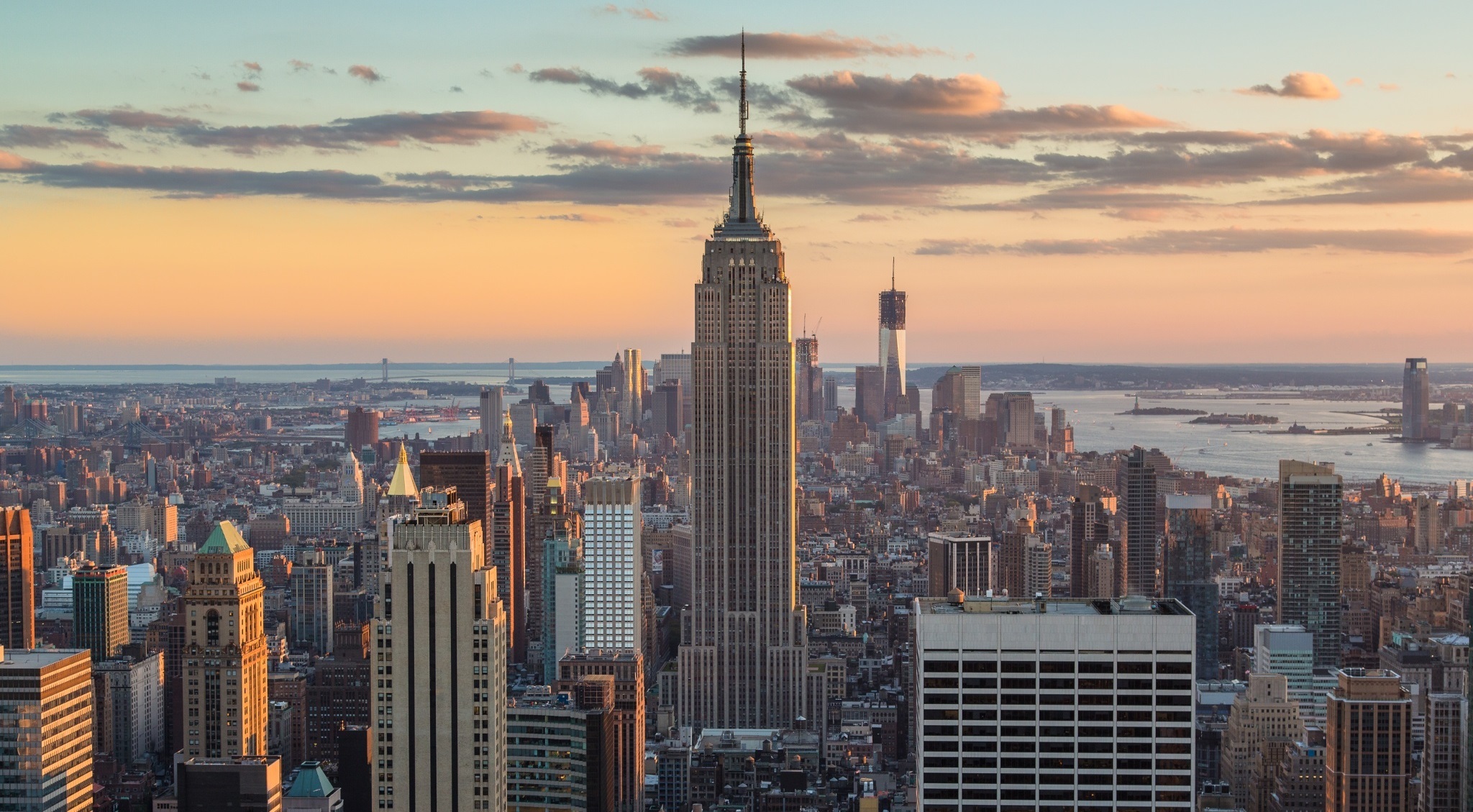
Several New York film unions exist to advantage the economic interest of those working in the film industry within the city. For a complete list of guilds and unions that operate within the five boroughs of NYC, visit the Mayor’s Office of Media and Entertainment TV and Theatre Guild, unions and organizations page here which is updated regularly.
Access to union membership and the protection of union member rights throughout New York City have long been the focus of labor law in the area. The goal is, and always will be, to provide fair and just working conditions for those in the film industry and any industry operating in the city.
Members that pay union dues receive specific benefits and services provided in the interest of all workers and through collective bargaining efforts. Although you cannot be forced to join a Union in NYC, the decision to do so may come up when working in the film industry and many NYC producers consider unionization.
The following is a partial list of NYC unions and guilds that operate within the city:
- Association of Independent Commercial Producers – provides a representation of the interest of companies that specialize in the production of commercials.
- Association of Independent Creative Editors – provides representation to the independent companies that create editorials and their editors.
- Directors Guild of America – supporting directors throughout NYC and America, the Directors Guild provides networking events and support services specifically for Directors.
- IATSE Local 52 – providing collective bargaining support to those in the filmmaking industry within NYC.
- International Cinematographers Guild Local 600 – supporting cinematographers throughout NYC, the International Cinematographers Guild is tens of thousands of cinematographers strong.
- Motion Picture Editors Guild Local 700 – providing support and collective bargaining to motion picture editors.
- NYPA: New York Production Alliance – representing the unified voice of filmmakers, television stars and commercial production members in New York City.
- SAG-AFTRA – providing membership benefits to a diverse community of filmmakers in NYC and around the world.
- SIMPTE: Society of Motion Picture & TV Engineers – a professional membership association for those working in entertainment technology.
- Writers Guild of America East – Protecting the screenwriters and filmmakers of NYC and screenwriters around the world.
Before you decide whether a union or guild is the right choice for you, do your research and educate yourself on the various unions in NYC for filmmakers and those in the film industry. If you have questions about any of the above NYC unions, contact the union office directly for a response.
New York Weather & Geography
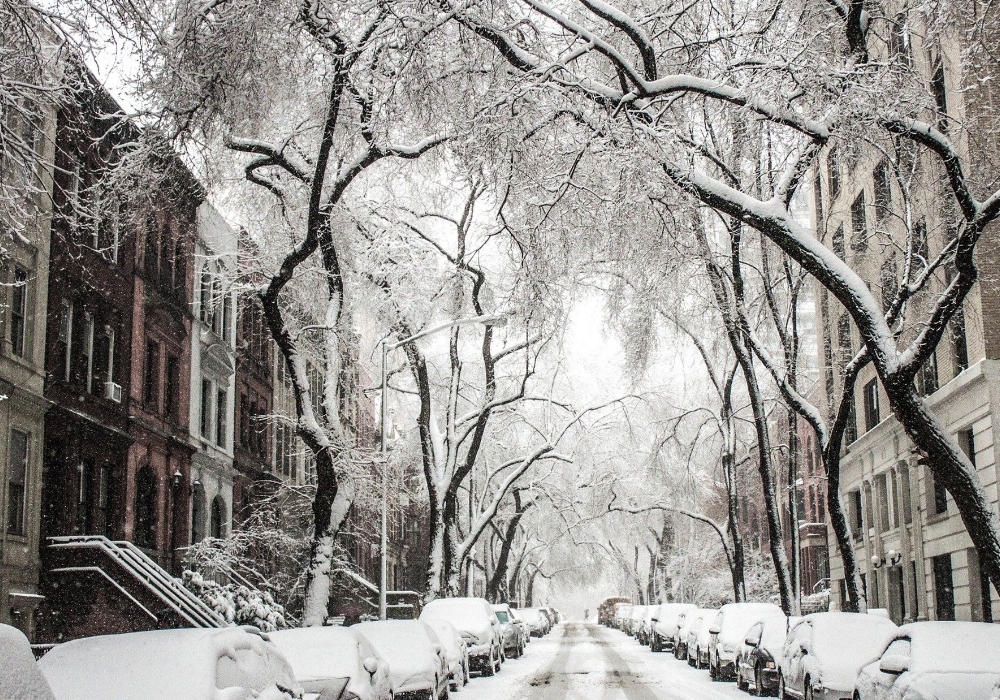
NYC weather certainly isn’t what attracts filmmakers to the city. Close proximity to the Atlantic Ocean and the surroundings of the Hudson River make the city a bustling and brisk town much of the year. Geographically, filmmakers find the area worthy of film as there are plenty of mountains and plains to keep the eyes interested.
The city features warm summers that can be on the humid side but this is welcomed more than the winters which are downright frigid and cold. The city is wet much of the year and temperatures can vary as widely as 85 degrees from winter to summer.
Optimal Time to Visit
Visitors and filmmakers alike find the best time of the year to visit NYC is when the weather is warmest from June to August or September. Earlier months can be brisk as can the later months in the year. The coldest time of the year, late January can see lows of 28 degrees or less as the “average.”
Cloud cover is a common scenario in NYC much of the year. The Cloudier period tends to begin the first week of November and runs for 7.4 months into June. If filming outside, be prepare for clouds to interrupt your day or, just plan for them so that you can use them to your advantage!
Overcast
Skies are overcast or mostly cloudy 53% of the year and partly cloudy the other 47% so it’s not likely you’ll experience a period of full-sun in which clouds do not threaten your view of the sky. The best way to deal with it is to be ready for it.
Rain averages hover between 25 and 35% most months throughout New York City. Winter months bring a mix of ice and frost or sleet rather than rain alone. Average rainfall hovers around 3.7 inches most months with a slight dip in January and February when snowfall is the more dominant weather force.
Water temperatures are mostly cold most of the year. It’s unlikely that you’ll want to film scenes that actually take place within the water unless wearing a wet suit. Even in the summer months, average water temperature in New York City remains at a brisk 73 degrees or, as cool as the average spring daily temperature.
New York Economy, Demographics & New York Transportation
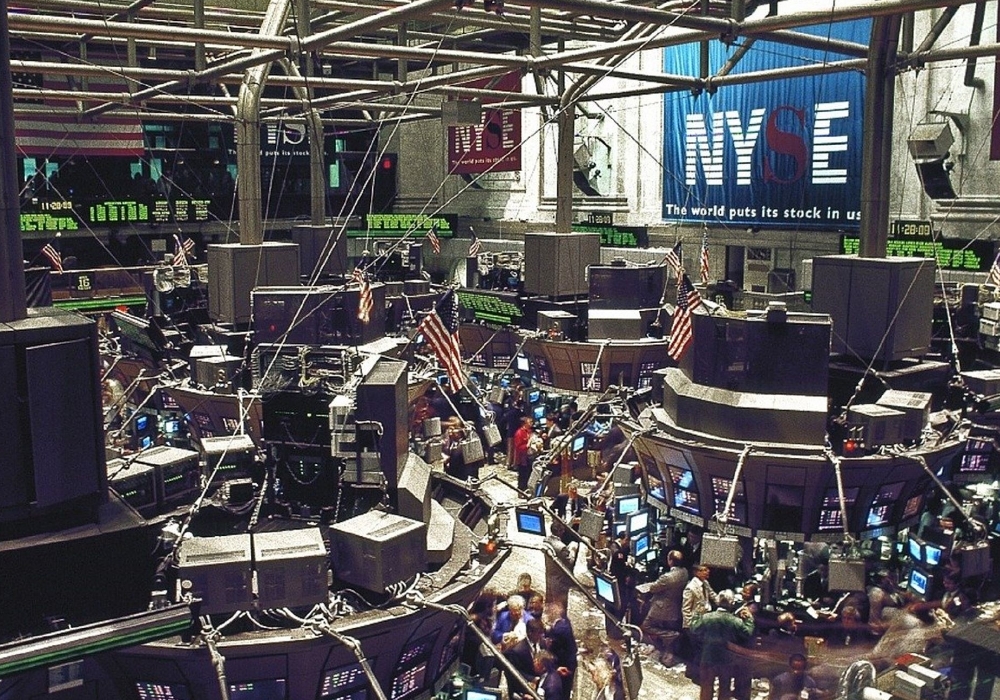
Culture and diversity play a significant role in the NYC economy as they have for several hundred years. The largest municipal and regional economy in the United States, NYC is anchored by the financial district in which Wall Street dictates the world’s financial center.
Market capitalization and trading activity are closely monitored from the Lower Manhattan locale where the stock exchanges keep financiers on their toes.
Center for Corporations
Several of the world’s largest corporations are centered in NYC. The borough of Manhattan consists of more than 500 million square feet of office space and growing. Nearby, Midtown Manhattan is considered the largest central business district in the entire world.
Industry firms in law, accounting, banking, management and consulting call New York City home. Additionally, real estate, technology, insurance, and health care all have their own bases in NYC too.
The city is a competitive market for digital media, advertising, fashion, design, and architectural business. Many businesses come to the city for expansion and the growth that an NYC title signifies. In all, the economy of New York City is as diverse as the demographics that make up the population of this robust and vibrant city.
The Melting Pot
This nickname which loosely describes the various diversely-populated neighborhoods on the Lower East Side gives reference to the diverse demographics within the city.
Immigrants within NYC speak as many as 800 different languages, although English is the most common dialect with the exception of the following neighborhoods: Flushing, Sunset Park and Corona where English is the least spoken language.
Many areas of the city are coined terms based on the immigrants that live in the area. There are 6 Chinatowns in the city. Additionally, populations from Asia, Korea, Japan, and various other locales make up much of the population within the city.
The area between Fifth and Sixth avenues in Manhattan is coined Little Brazil for the popularity of the Brazilian population within the area.
Median Incomes
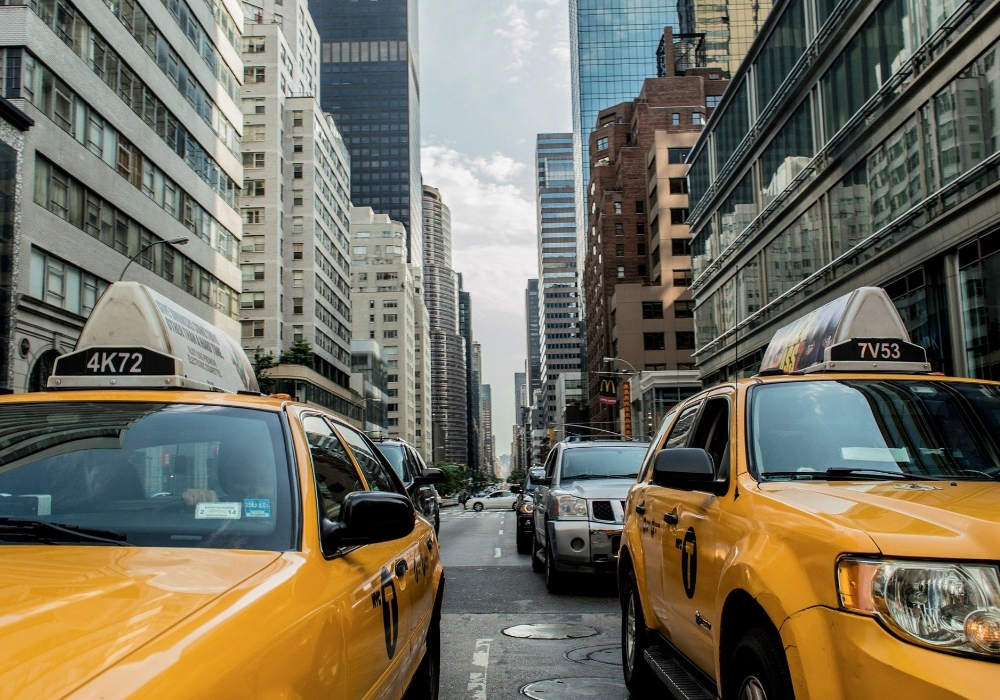
Incomes are diverse within the city too. While the median household income is upwards of $188K, the lowest reported household income in the city was just $9,320, a difference of nearly $180K from the average.
The majority of housing units are owner-occupied within the city. Rental units have a vacancy rate of between 3 and 4.5% which stays well below the 5% threshold defined as a housing emergency. Therefore, rent control and rent stabilization continue in the city.
Airports
Transportation into the city via nearby airports John F. Kennedy International Airport (JFK), LaGuardia Airport (LGA) or Newark International Airport (EWR) bring upwards of 60 Million people into New York each year. JFK is located in Queens and primarily operates international flights.
LGA is located in Queens as well and operates domestic flights throughout the US and is the primary landing spot for most incomers entering NYC from somewhere else here in the U.S.
Finally, EWR, although not technically a NYC airport is located in nearby Newark New Jersey and operates a mix of both domestic and international flights. Although slightly further away than the other two airports, EWR tends to be a bit easier to get in and out of as it’s not nearly as crowded as the two Queens airports.
Public Transportation

By land, most get around NYC either by Subway or Bus. Taxi, Tram, Bike, Ferry and Car are additional alternatives depending on how far you have to go and where.
The Metropolitan Transportation Authority (MTA) of New York City Transit is the most inexpensive means of travel within the city and operates 24 hours a day, 7 days a week traveling throughout five boroughs and offering navigation via app support available for both iPhone and Androids.
The Metro
A MetroCard can be purchased for transit on Subway or Bus for just $5.50. Use your card to navigate NYC with various price points based on the means of travel that you choose.
Pay-per-ride fees will cost $2.75 per trip whereas an Express Bus ride will cost $6.50. A $3 MetroCard can be purchased from a vending machine for a single ride use within two hours of the vended disbursement of the card.
The Subway operates around the clock offering the cheapest transit within the city. A single cost of $2.75 can be used to travel quite the distance with free subway transfers taking you throughout the city.
Unfortunately, the Subway does not travel to Staten Island so visitors wishing to take their trip to the Island must board the free Staten Island Ferry or take a bus in order to get to their desired Staten Island destination.
Buses
Buses run between subway stops and offer a secondary travel option within the city. Exact change or a MetroCard is required for Bus travel. No Pennies or paper money such as dollar bills are accepted for Bus Travel throughout the city.
While buses run every 5 to 15 minutes, and many run 24 hours a day, 7 days a week, it is important to check for overnight route services on the bust that you use to ensure you have appropriate transportation out of the area when you’re ready. Due diligence will be needed here to ensure your safety.
Additional transportation in New York City includes the Roosevelt Island Tram which offers an aerial view of Midtown East via the path from 59th Street and Second Avenue to Roosevelt Island. The service provides transportation for 2 million riders 7 days per week and offers transfers to MTA subway and bus routes for continued transit within the city.
Taxis
Taxicabs can be seen throughout the city providing rides around the town. Several Taxicab services including the Yellow Taxi Cabs and Green Boro Taxis which are regulated by the NYC Taxi & Limousine Commission can be found offering rides to weary travelers.
Use safe judgment when hailing a cab and be prepared for minimum fares which increase every fifth mile or every minute of travel.
Traveling the city by car is best navigated with the help of Google Maps and BestParking.com to ensure proper parking within the city. To book a parking spot before you arrive, use SpotHero on your phone and register before you arrive.
Bikes
Walking around town is also an option as would be visiting NYC by Nike. Recent additions of bike rentals around the city add an additional way to get from Point A to Point B with ease. Check the NYC Department of Transportation for a link to bike maps and local Bike rentals in the city.
No matter how you choose to get around town, NYC travel is sure to be exciting. For your safety, take some time out before your trip to be sure you understand the local rules and regulations as well as what to expect when traveling around town.
New York Recreational Activities
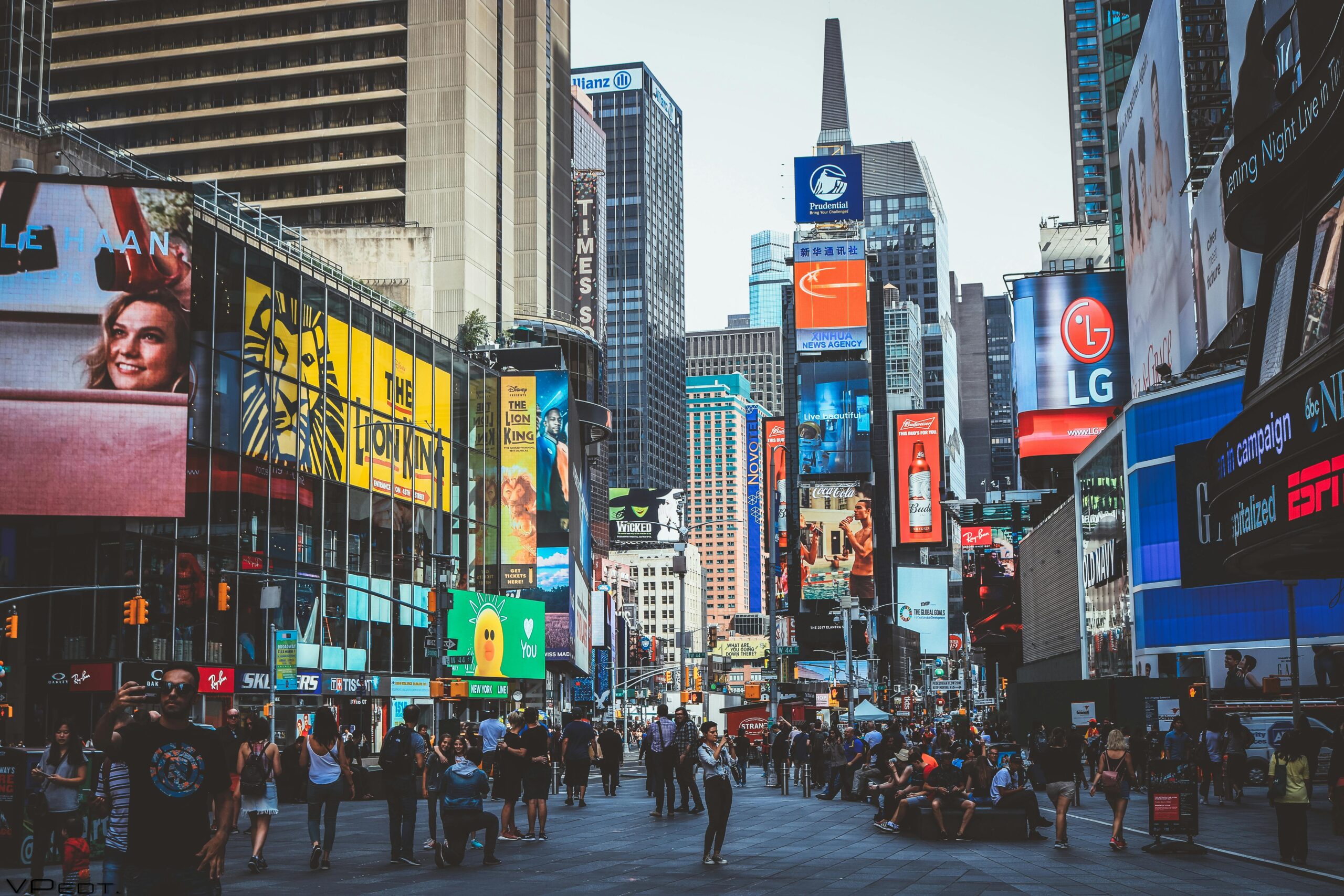
The City the Never Sleeps has so much to see and do. From shopping and dining to hiking and historic museums, there’s something for everyone in the city that is just as diverse recreationally as it is demographically.
Filmmakers love the various eat-in theaters that offer a fancy way to watch a movie and enjoy more than just popcorn and a drink.
Check out the Alamo Drafthouse in Brooklyn to enjoy a show complete with a long draft beer menu – just be sure to follow the rules, “No Texting, No Talking, and No Arriving Late!” If you’re real hungry, check out Brooklyn’s first dine in theater at Nitehawk Cinema.
Architecture
If you’re in New York City purely for the architecture, consider popular filming locations such as Times Square, Rockefeller Center, or Central Park. Each is sure to provide a glimpse into real NYC and the demographic culture that we’ve all come to know and love about this beautiful town.
The Central Park Film Festival hosts a few nights of film screenings that are sure to please. If you’ve never been to the Film Festival, consider a trip to the outdoor scene which takes over the Park.
Or, if you’re an aspiring filmmaker, check out the New York Film Academy for a tour. You’ll get up close and personal with the NYC campus which overlooks the Statue of Liberty at the Southern tip of Manhattan.
Nightlife
If drinking or the nightlife scene is more your style, consider Le Bain, the hot tub may not be the ideal place to spend the evening but some mention it as a right of passage to anyone drinking on the town.
For dancing and electronic music, check out Paul’s Cocktail Lounge which was opened by Paul Sevigny, brother to Chloe Sevigny, as a follow-up to the previously closed Beatrice Inn. There’s literally a bar or nightclub for every music style, dance style, or genre you can imagine within the city–all you have to do is ask a local where to go!
The Big Apple
Whether you’re in New York City for a week, or a month, shooting on location or just visiting, there’s plenty to see and do. Ask the locals what the best events are at your time of visit or where the most popular activities are taking place as things change day-to-day, but one thing that won’t change is the diversity and culture that is found within the Big Apple.

